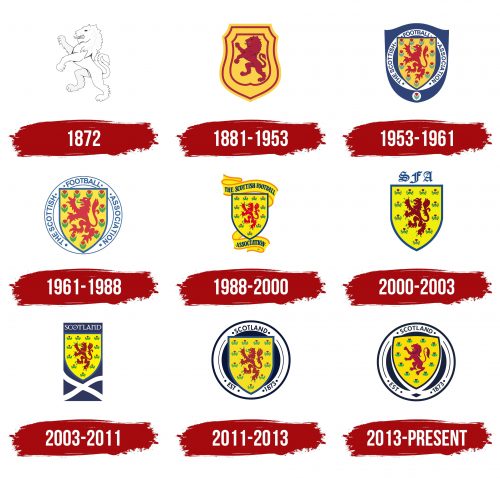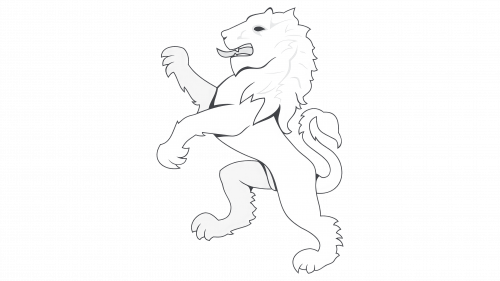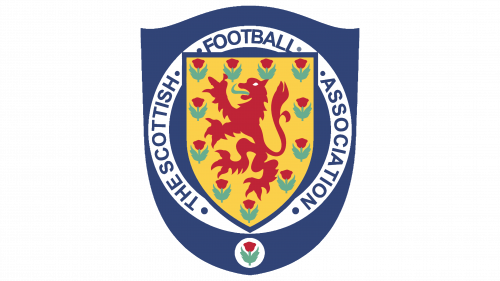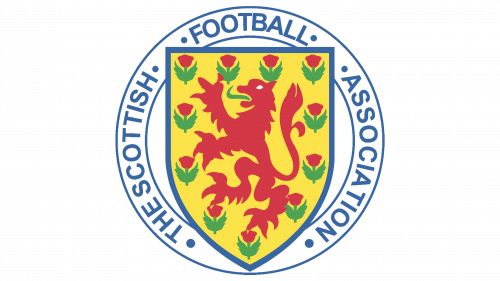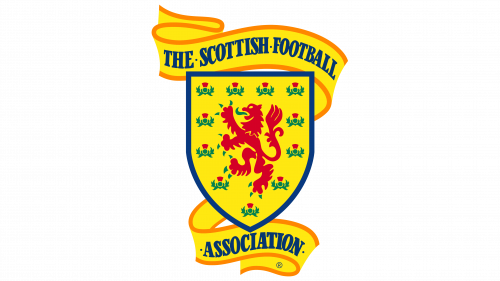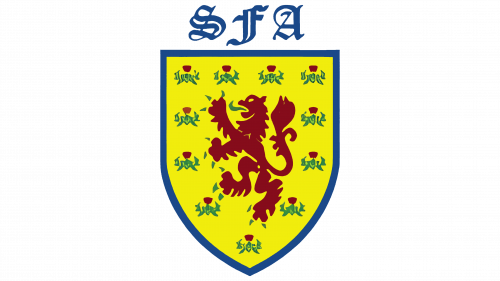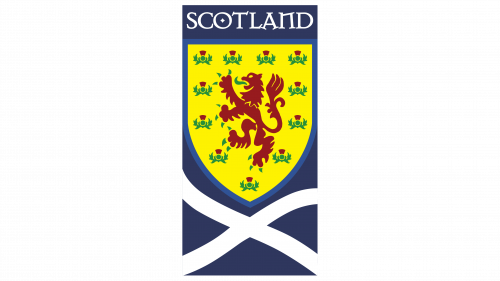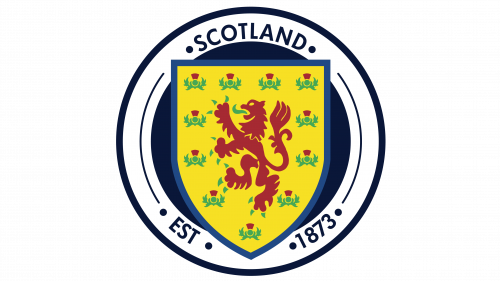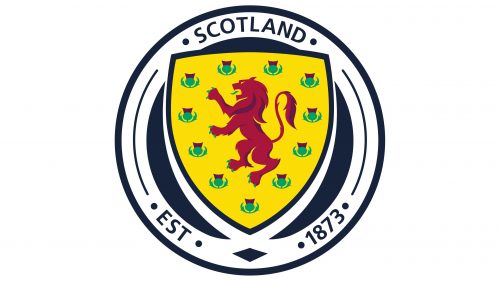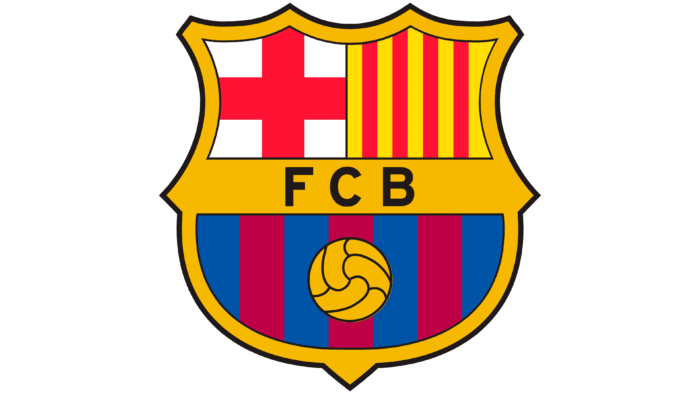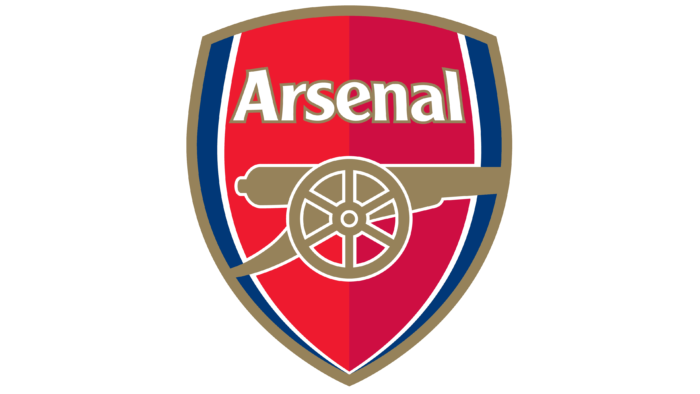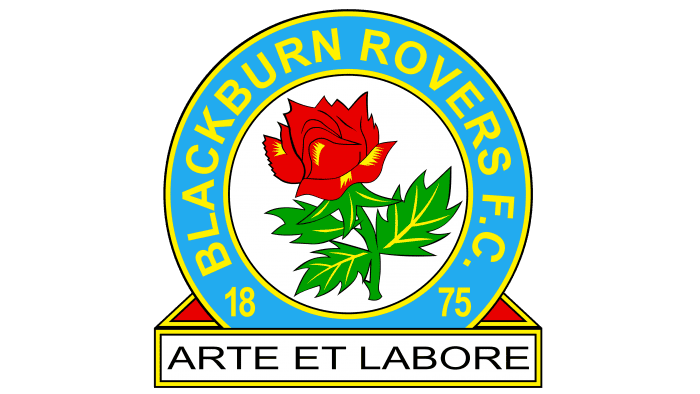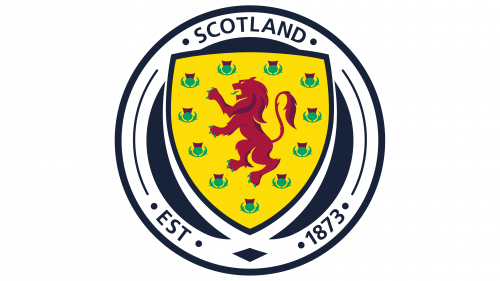 Scotland National Football Team Logo PNG
Scotland National Football Team Logo PNG
The Scotland national football team logo is designed in a Scottish spirit. Every emblem element is carefully selected to reflect key aspects of Scottish identity and pride. The emblem represents the team’s courage, resilience, and unwavering nature in the face of its opponents.
Scotland National Football Team: Brand overview
The Scotland national football team, among the world’s oldest and most storied, boasts a rich history and deep-rooted tradition. The Scots played a pivotal role in the early development of modern football and were founding members of FIFA. The narrative of Scottish football is one of early dominance, periods of struggle, and passionate comebacks.
The first official international football match occurred 1872 between Scotland and England, ending in a 0-0 draw. This historic game ignited the world’s oldest football rivalry. In the late 19th century, Scotland dominated British football, winning 10 out of the first 11 editions of the British Home Championship.
1928 Scotland achieved a legendary victory over England at Wembley, triumphing 5-1. This remarkable performance earned the team the nickname “Wembley Wizards.” Throughout the early 20th century, Scotland excelled in the British Home Championship and participated in the first three World Cups (1930, 1934, and 1938), though without significant success.
The 1960s and 70s represented a golden era for Scottish football, featuring stars like Denis Law, Billy Bremner, and Kenny Dalglish. Despite strong performances, the team struggled to advance beyond the group stages in major tournaments. At the 1974 World Cup in West Germany, Scotland remained unbeaten but was eliminated due to goal difference.
From the mid-1970s to the end of the 1990s, Scotland consistently qualified for World Cups (1974, 1978, 1982, 1986, and 1990), but advancing beyond the group stage remained elusive. The team became known for its resilient spirit and ability to challenge top footballing nations.
In the 1990s, under the management of notable figures like Craig Brown, Scotland qualified for Euro 1996 and the 1998 World Cup. At the latter tournament in France, they faced tough competition from Brazil, Norway, and Morocco, ultimately finishing at the bottom of their group.
The turn of the century brought challenging times for Scottish football. The team failed to qualify for any major tournaments for over two decades. However, a resurgence began under the leadership of Steve Clarke, who took over in 2019. Clarke guided Scotland to Euro 2020, marking their first major tournament appearance since 1998. Although the tournament, held in 2021 due to the pandemic, ended in a group-stage exit, it reignited hope among the fans.
The future of Scottish football looks promising with a mix of experienced players like Andy Robertson and Kieran Tierney alongside emerging talents such as Billy Gilmour and Nathan Patterson. Despite missing out on qualification for the 2022 World Cup, the team’s performances in recent years have fostered optimism.
Scotland is known for its passionate and tenacious playing style, characterized by swift wing attacks and robust defense. The “Tartan Army,” Scotland’s dedicated fan base, is renowned for their fervent support, filling stadiums with the distinctive tartan colors.
Among the legends of Scottish football are Kenny Dalglish, Graeme Souness, Gordon Strachan, and Ally McCoist. As of August 2023, Scotland is ranked 39th in the FIFA world rankings. The Scotland national team continues to be a unique and beloved presence in international football, celebrated for its rich heritage and indomitable spirit.
Meaning and History
What is the Scotland National Football Team?
The Scotland National Football Team represents Scotland in international football competitions. Managed by the Scottish Football Association (SFA), the team is one of the oldest in the world, with a rich history dating back to the earliest days of international football. Scotland has a passionate football culture, and the team is known for its dedicated and fervent supporters. The team has participated in numerous major tournaments and has produced many talented players who have left their mark on the sport. Scotland continues to be a proud and competitive presence in international football, striving for success and recognition on the global stage.
1872
The image of the rising lion unites the early logos of many European national teams, showcasing the region’s historical commonality and unity. This image is borrowed from the country’s coat of arms, where the lion represents a strong monarch.
As the symbol of Scotland’s sports team, the lion features light, barely sketched lines, resembling the initial steps footballers take on the world stage. The lion embodies sportsmanship, bravery, and determination.
1881 – 1953
The logo demonstrates the gradual refinement of the heraldic symbol. The red color of the lion signifies courage, intense energy, and passion for the sport. Opponents find it challenging to withstand such a force. The lion is placed on a yellow shield with a double red border. These shades emphasize teamwork and the openness and readiness of the team for professional and friendly relationships. The shape of the shield promises noble conduct and knightly qualities in the players. The double border reflects resilience, the defense of values and ideals. The logo represents a team with the heart of a lion, prepared to compete for supremacy.
1953 – 1961
In preparation for the 1954 World Cup, which the country’s football association allowed them to participate in, the team updated their logo to meet modern standards.
The country’s coat of arms features a rising red lion on a blue shield-shaped background. Thistle, Scotland’s national flower, grows around the king of beasts as a distinctive element. The bright floral motifs add notes of passion and poetic beauty.
According to legend, in the 13th century, during an attack on the soldiers’ camp, one of the enemies stepped on a thistle. His loud cry of pain woke the sleeping Scottish warriors, allowing them to fend off the surprise attack. Since then, the thistle has become a symbol of vigilance, protection, and the nation’s salvation.
On the white circle surrounding the coat of arms, “Scottish Football Association” is written, adding a touch of formality and officiality to the emblem. The logo is an example of the synthesis of historical symbols with modern design, showcasing the evolution of the team and the development of Scottish football.
1961 – 1988
The removal of the background made the emblem lighter and more compact. The transformed shield of Scotland is placed within a ring that features the name of the football association. Combining the circular shape and angular geometric elements creates a balanced and harmonious design. This update enhances the visual appeal, simplifying the emblem while retaining its symbolic significance.
1988 – 2000
The updated emblem resembles a championship trophy, highlighting the team’s ambitions and confidence in its abilities—a golden ribbon with an orange border winds around the top and bottom of the crest. In the upper wide part, the words “Scottish Football” are written in blue font, while “Association” is displayed at the bottom. The vibrant colors reflect the team’s readiness for regular matches on the field and enthusiasm for the sport. This design emphasizes their commitment and the spirit they bring to every game.
2000 – 2003
The team removed secondary elements with each rebranding, keeping the identity focused on the essentials. The lion with thistle flowers on a yellow background is the central figure of the emblem. The shield symbolizes valor. The athletes are as brave as lions, maintaining vigilance and defending the goal like prickly thistles. The opponent has no chance of scoring. The inscription “SFA” in an old English font emphasizes the connection to the parts of the United Kingdom. At the top of the logo, the abbreviation demonstrates the national team’s management.
2003 – 2011
The 2003 logo embodies national pride and the desire to stand out globally. The team draws strength from symbols of Scotland, representing the region’s history. On a vertical banner resembling the standards of Scottish castles, the coat of arms and the national flag are displayed. The Saint Andrew’s Cross represents the foundation of the Christian faith. Above it, the shield with the lion symbolizes chivalric courage and strength. The logo reflects the team as part of the Scottish people, representing the country and defending its honor on the international level.
2011 – 2013
The emblem echoes previous designs and is styled to resemble a ball, with the crest of Scotland at its center. The country’s name at the top leaves no doubt about the team’s identity. The founding year is prominently displayed, emphasizing the team’s long-standing experience and impressive history. This design pays homage to the team’s heritage while showcasing its proud origins and established presence in football.
2013 – today
In the modern logo, the lion’s image has been changed to appear more natural, closely resembling the actual animal. The proud king of beasts roars, displaying strength. The giant’s stance instills fear, evoking awe of royal power. Positioned on a shield, the lion protects the borders, while the thistle around it exposes opponents’ schemes. The yellow background and red beast contrast with the blue border, reflecting Scotland’s national colors and emphasizing unity and patriotism.
